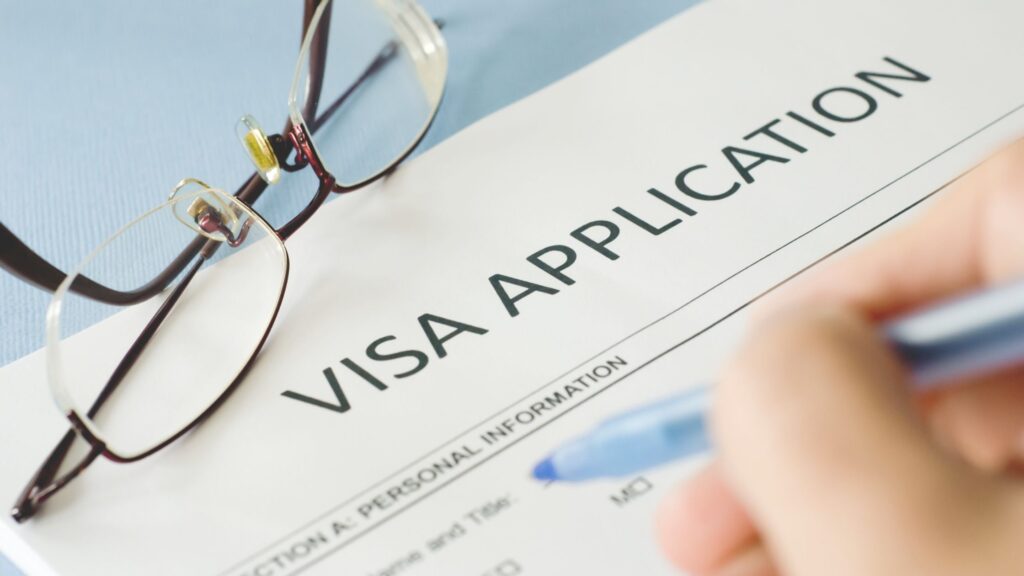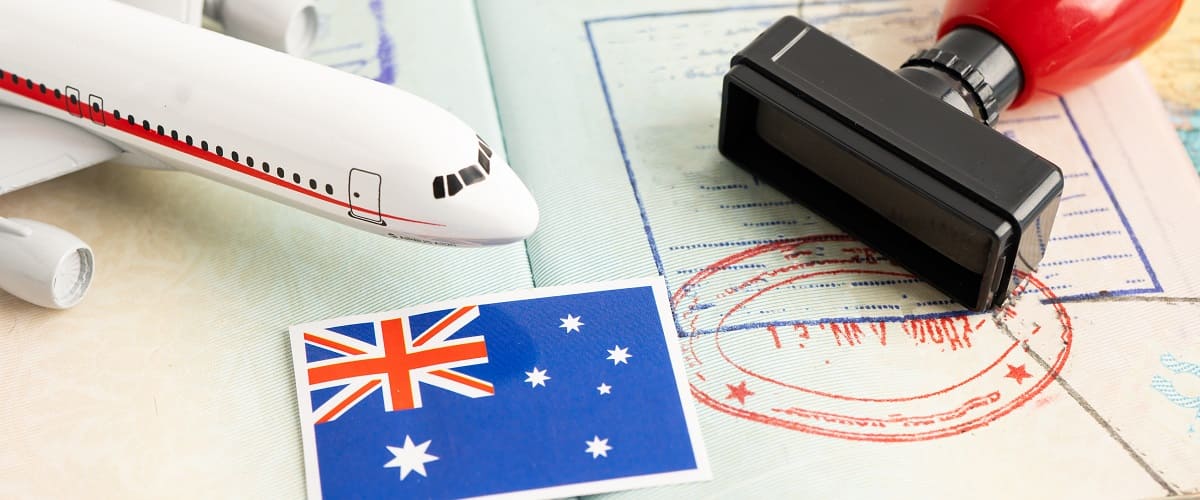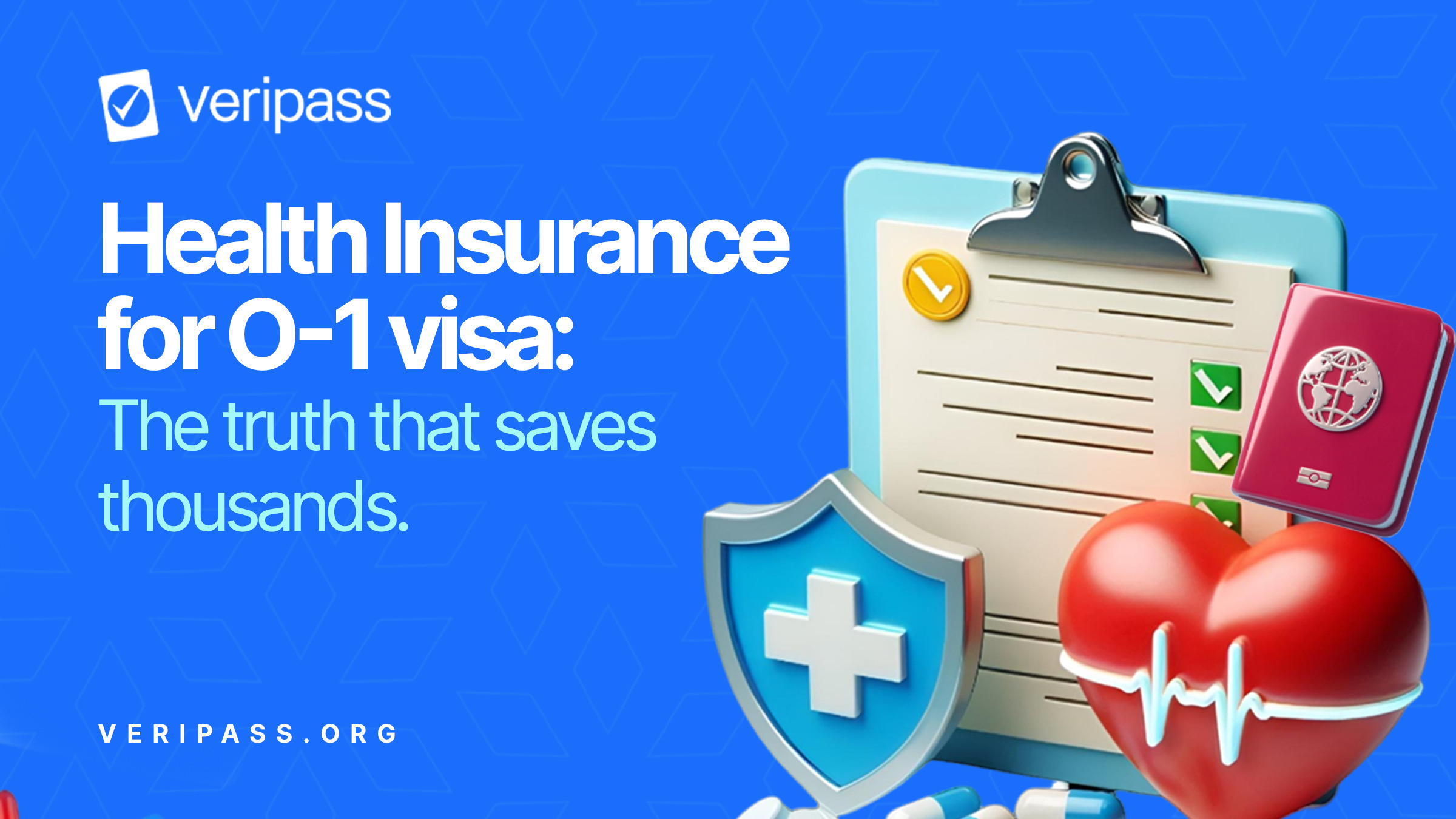That’s what Maya paid in Los Angeles three weeks after landing with her O1 visa. Not because she didn’t have insurance, she did. Not because she went to a fancy hospital, she didn’t. She paid because her health insurance for O1 visa had a clause buried on page 47 that excluded “outpatient emergency care.” She missed it. The insurance company didn’t.

One visit. One misunderstood policy. $8,400 gone. You’re reading this because you’re researching health insurance for O1 visa before making the same mistake. Smart. However, here’s what will shock you: most people obsess over finding the cheapest insurance plan while completely ignoring the bigger problem, their visa application itself.
If your O1 visa gets denied, you won’t need American insurance at all. If it gets approved but is structured wrong, you’ll hit coverage gaps that leave you exposed, no matter which plan you buy. The insurance companies know this. They’re counting on it.
So before you compare premiums and deductibles, let me show you what actually matters: how to build a bulletproof visa foundation first, then layer the right insurance on top, so you never end up choosing between your health and your savings.
This is everything they don’t tell you.
Read Also: How to Immigrate to the United States Without a Job Offer in 2025
Why Health Insurance for O-1 Visa Holders Isn’t Like Insurance Back Home

American healthcare is expensive in ways that don’t make sense until you experience it.
A routine doctor’s visit costs $150-300 without insurance. An ambulance ride? $1,200-2,500. If you need surgery, even something minor, you’re looking at $10,000 minimum. Having a baby can cost $30,000. A serious accident or illness can bankrupt you.
This isn’t an exaggeration. This is normal.
Back home, you might have government healthcare or affordable private options. In America, O-1 visa holders can’t access Medicare or Medicaid (the government programs). You’re on your own. You need private health insurance for O-1 visa coverage, and you need it from day one.
But here’s the part that trips people up: not all insurance companies want to cover you.
The O-1 Visa Insurance Problem Most People Don’t See Coming
When you search for health insurance for O-1 visa holders, you’ll find plenty of companies advertising “visitor insurance” or “travel insurance.” These sound fine until you read the fine print.
Travel insurance is not health insurance. It covers emergencies: broken bones, sudden illness, and accidents. It does NOT cover:
- Routine doctor visits
- Prescription refills for ongoing medications
- Preventive care (annual checkups, screenings)
- Mental health treatment
- Chronic condition management
If you have asthma, diabetes, high blood pressure, or any ongoing health issue, travel insurance will leave you exposed.
You need comprehensive health insurance, but many providers won’t offer it to O1 holders because you’re considered “temporary.” Some states make it easier than others. California, New York, and Texas have more options. Smaller states? Good luck.
And then there’s the employer question.
Employer-Sponsored vs. Private: What Works for O1 Visa Holders
If you’re moving to the US with a job offer, your employer might offer health insurance. This is the easiest path. Take it. Employer-sponsored plans are usually better and cheaper than anything you’ll find on your own.
But many O-1 holders are self-employed; founders, artists, consultants, researchers working independently. If that’s you, you’re buying private insurance, and the options get messy.
Some O1 holders try to access the ACA marketplace (Obamacare). Here’s the confusion: O1 visa holders ARE eligible for ACA plans in most cases, but the application process asks questions that make it unclear. You’ll need to prove you’re a “lawfully present” non-citizen. It’s possible, but not every insurance broker knows this. Many will tell you no when the answer is actually yes.
Private plans outside the ACA marketplace exist, but they cost more and cover less. You’re looking at $400-900/month for a single person, depending on age and coverage level. Family plans? Double or triple that.
What Health Insurance for O1 Visa Actually Costs (Real Numbers)
Let’s talk money. Here’s what you’re realistically paying:
For a 30-year-old individual:
- Basic travel insurance: $150-250/month (emergency only, not real coverage)
- ACA marketplace plan: $400-600/month (comprehensive, but finding it takes work)
- Private comprehensive plan: $500-900/month (easier to buy, higher cost)
For a 40-year-old with a spouse:
- Travel insurance: $350-500/month (still inadequate)
- ACA marketplace: $800-1,200/month
- Private plan: $1,000-1,800/month
For a family of four (two adults, two kids under 10):
- You’re looking at $1,500-3,000/month depending on the plan and state.
These are premiums, which you pay every month just to have insurance. On top of that, you’ll pay:
- Deductible: The amount you pay out of pocket before insurance kicks in ($1,000-$5,000/year)
- Copays: $20-50 every time you see a doctor
- Coinsurance: You pay 20-30% of certain treatments even after hitting your deductible
An “affordable” plan might have a $300/month premium but a $5,000 deductible. That means you’re paying $8,600 before insurance covers anything substantial.
A “premium” plan might cost $800/month with a $1,000 deductible. You pay more upfront but get better coverage faster.
The Three Mistakes O1 Visa Holders Make With Insurance

Mistake 1: Buying insurance too late
You need coverage before you arrive in the US, or at least within your first week. Waiting creates a gap. And if something happens during that gap, an accident, sudden illness, you’re uninsured.
Some people think, “I’ll figure it out when I get there.” Bad plan. Insurance companies have enrollment periods. Miss the window, and you’re stuck waiting months.
Mistake 2: Choosing the cheapest plan without reading what it covers
That $150/month plan looks great until you need a prescription and discover the plan doesn’t cover pharmacy costs. Or you go to a doctor and find out they’re “out of network,” so your visit costs $400 instead of $40.
Cheap plans save money until you actually need healthcare. Then they cost you more.
Mistake 3: Not understanding “pre-existing conditions”
If you have any ongoing health issues, anxiety, back pain, high cholesterol, whatever, some plans will refuse to cover treatment for it. Others will cover “acute episodes” only, meaning if your condition suddenly gets worse, they’ll help. But routine management? You pay.
Always ask: “Does this plan cover pre-existing conditions, and if so, how?”
What You Actually Need in a Health Insurance Plan (Checklist)
When you’re comparing health insurance for O1 visa coverage, look for these things:
- Hospitalization and emergency care: Full coverage for hospital stays, surgery, and Emergency Room visits
- Outpatient doctor visits: You should be able to see a doctor without paying $300 each time
- Prescription drug coverage: Medications should be covered or heavily discounted
- Preventive care: Annual checkups, vaccines, and screenings included
- Mental health services: Therapy, psychiatry, counseling (this matters more than people admit)
- Specialist access: Can you see a cardiologist, dermatologist, etc., without jumping through hoops?
- Provider network: Does the plan work with doctors and hospitals near where you’ll live?
- Coverage for dependents: If your spouse and kids are on O3 visas, can they join your plan?
Don’t just compare prices. Compare what you’re actually getting.
Why Your O1 Visa Application Matters More Than You Think
Here’s the part most articles skip:
Your health insurance options depend heavily on how your O1 visa is structured.
If your visa is tied to an employer, you’re likely getting employer-sponsored insurance. Simple.
If your visa is self-petitioned (you’re sponsoring yourself), you’re navigating private insurance alone. Harder.
If your visa gets delayed or denied, you’re stuck in limbo, possibly in the US on a tourist visa with no work authorization and no good insurance options.
This is why getting your O1 visa application right from the start matters. A weak application doesn’t just risk denial. It creates downstream chaos, including insurance coverage gaps.
This is where Veripass comes in.
Veripass handles O1 visa applications from start to finish. We’re talking about everything: building your case, securing recommendation letters, filing petitions, handling PR and publications if needed, registering your business entities, all the pieces that turn a “maybe” application into an approval.
Why does this matter for health insurance for O1 visa holders?
Because once your visa is approved and you’re legally in the US with work authorization, insurance companies take you seriously. You’re not a tourist. You’re not in limbo. You’re a visa holder with status, and that opens doors.
Veripass doesn’t sell insurance, but we know the landscape. After helping hundreds of professionals move to the US, we’ve seen which insurance paths work and which ones waste money. When you book a consultation with us, we don’t just get your visa sorted; we advise on what comes next, including insurance.
Think of it this way: if a company knows the O1 visa process well enough to get you approved, they probably know what you’ll face when you land. We do.
The First 90 Days: Your Health Insurance Action Plan
Here’s what you should do, step by step:
Before You Leave Your Home Country:
- Research insurance providers that cover O1 visa holders in your destination state
- Get quotes from at least three companies
- Confirm your visa approval and timeline
- Purchase insurance with a start date matching your US arrival
Week 1 in the US:
- Activate your insurance policy (call the provider, confirm coverage is live)
- Find in-network doctors and hospitals near your home
- Set up a primary care doctor appointment within your first month
Month 1-3:
- Attend your first doctor visit (even if you feel fine, establish care)
- Fill any prescriptions you need
- Review your insurance plan. Does it actually work the way you thought?
- If you’re unhappy with your plan, research alternatives for the next enrollment period
Pro tip: Keep all your insurance documents, bills, and receipts organized from day one. American medical billing is confusing. You’ll get bills from the hospital, the doctor, the lab, and the anesthesiologist, all separately. Track everything.
See Also: How to Fill Out Form DS-160 for a U.S. Visa
What About Mental Health? (The Topic Nobody Discusses)
Moving to America on an O1 visa is stressful. You’re in a new country, building a career, possibly away from family, navigating systems that make no sense.
Burnout is real. Anxiety is common. Loneliness happens.
Most health insurance for O1 visa plans includes some mental health coverage, but the quality varies wildly. Some plans cover 10 therapy sessions a year. Others cover unlimited visits but only with specific providers. Some make you pay $100+ per session out of pocket.
If mental health support matters to you (and it should), ask about:
- How many therapy sessions are covered per year?
- What’s the copay per session?
- Can you access teletherapy (online sessions)?
- Are psychiatrists (for medication) covered separately from therapists?
This isn’t a luxury. It’s basic healthcare. Don’t skip it.
The State-by-State Reality
Health insurance for O1 visa holders looks different depending on where you live.
- California: Tons of options. ACA marketplace works well. Large immigrant populations mean insurers are used to covering non-citizens.
- New York: Similar to California. Good provider networks, access to specialists, and strong ACA options.
- Texas: Fewer ACA plans, but major cities (Austin, Houston, Dallas) have decent private options.
- Florida: Mixed bag. Miami has more options than smaller cities.
- Everywhere else: Options shrink fast. Rural areas and smaller states have limited insurance providers. You might need to buy a plan based in a major city even if you don’t live there.
Before you commit to living somewhere, research what insurance is available there. Your dream city might have nightmare healthcare access.
What Happens If You Can’t Afford Insurance?
Let’s be real: health insurance in America is expensive. If you’re moving on an O1 visa, you’re likely earning decent money, but maybe you’re bootstrapping a startup or funding your own research. Money might be tight.
If you genuinely can’t afford comprehensive insurance, here are your options:
- Buy a high-deductible plan: Lower monthly premiums ($200-300/month), but you pay the first $5,000-$7,000 of medical costs yourself. It protects you from catastrophic expenses but not routine care.
- Use community health clinics: Many cities have low-cost or sliding-scale clinics for people without insurance. Quality varies, but it’s better than nothing.
- Negotiate medical bills: If you do get a huge bill, call the hospital’s billing department. Ask for a payment plan or financial assistance. Many hospitals have programs for uninsured or underinsured patients.
- Don’t skip insurance entirely: The risk is too high. One emergency can cost $50,000+. Don’t gamble.
Why You Should Book a Consultation With Veripass
You came here looking for information about health insurance for O1 visa holders. You got it. But if you take nothing else from this article, take this:
Insurance is the second step. The first step is getting your O1 visa right.
A strong visa application means faster approval, fewer delays, and a smoother transition into American life, including healthcare. A weak application creates chaos.
Veripass handles O1 and EB2-NIW visas from start to finish. We manage the publications, the petitions, the business registrations, the PR, and all the moving parts that turn your profile into an approvable case. We’ve done this hundreds of times. We know what works.
And once your visa is approved? We don’t just disappear. We guide you on what comes next. That includes pointing you toward the right insurance options for your situation.
Book Your Free Consultation with Veripass. Let’s get your visa sorted first. Then we’ll make sure you land in America with a clear plan, including healthcare coverage that actually protects you.
Because moving to the US is hard enough. You shouldn’t have to figure out everything alone. Send an email to clientsupport@veripass.org.
What is the downside of an O-1 visa?
The O-1 visa has several downsides. First, it’s employer-dependent; if you lose your job or sponsorship, your visa status ends, and you need to leave the US or find new sponsorship quickly. Second, it requires continuous proof of extraordinary ability, meaning you can’t just coast; you need to maintain your achievements. Third, it’s temporary with no direct path to a green card (you need to apply separately). Fourth, your spouse and children on O-3 visas cannot work in the US, which creates financial pressure. Finally, the application process is expensive ($500-$5,000+ in fees) and time-consuming, requiring extensive documentation like recommendation letters, awards, and publications.
Can someone with a US visa get health insurance?
Yes, people with US visas can get health insurance, but options depend on your visa type. O-1 visa holders can access private health insurance plans and, in most cases, ACA marketplace plans (Obamacare) since they’re considered “lawfully present.” However, you cannot access government programs like Medicare or Medicaid. If you’re employed, your employer may offer health insurance; take it, as it’s usually better and cheaper. Self-employed O-1 holders need to buy private insurance or navigate the ACA marketplace. Tourist visa holders are typically limited to short-term travel insurance, which covers emergencies only, not comprehensive care.
How much is health insurance in the USA for foreigners?
Health insurance costs for foreigners in the USA vary based on age, coverage level, and state. For a 30-year-old individual, expect $400-$900 per month for comprehensive coverage. A 40-year-old with a spouse pays $800-$1,800 monthly. Families with two children typically pay $1,500-$3,000 per month. These are just premiums; you also pay deductibles ($1,000-$5,000 yearly before insurance kicks in), copays ($20-$50 per doctor visit), and coinsurance (20-30% of treatment costs). Basic travel insurance runs $150-$250 monthly but only covers emergencies, not routine care. California, New York, and Texas have more competitive rates than smaller states.
How long does it take from O-1 to green card?
The O-1 visa doesn’t automatically lead to a green card; you need to apply separately through a different immigration pathway. If you qualify for an EB-1 green card (extraordinary ability category, similar to O-1), processing takes 12-24 months with premium processing, or longer without it. The EB-2 NIW (National Interest Waiver) route typically takes 18-36 months, depending on your country of origin and USCIS processing times. Some applicants face backlogs of 3-5 years if they’re from countries with high immigration numbers like India or China. You can work on your O-1 while your green card application is pending, but there’s no guaranteed timeline or automatic transition.
